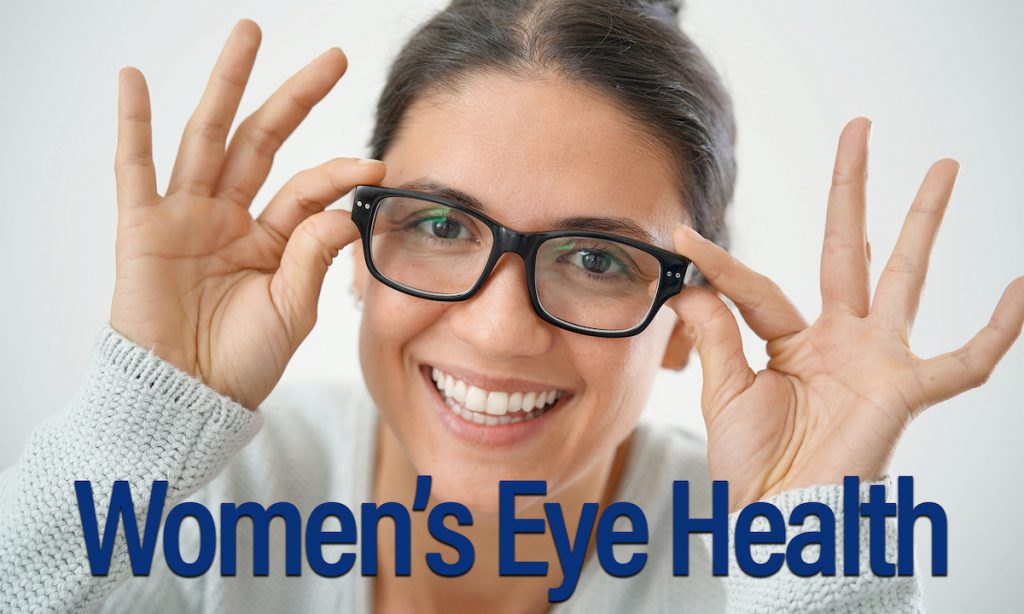
The challenges of eye health increase with age, and as women generally live longer than men, the offices of adult eye doctors are filled with older women. Among the most common diseases seen in the older population are cataracts, glaucoma, and macular degeneration.
Cataracts typically develop slowly, over many years. They result in a loss of ability to see clearly in dim light, the gradual loss of vibrancy in colors, and trouble with contrast. They are easily treated with cataract surgery, an outpatient procedure that almost always results in an immediate improvement in vision.
The risk of glaucoma increases as we age, and our natural hormones may play a role in its development in women. Steroids, especially those taken chronically for conditions such as arthritis and other inflammatory conditions, increase the risk of developing glaucoma at any age. Topical steroid drops should be prescribed with caution and only for short, defined periods of time (except in certain chronic conditions which require close follow-up).
Age-related macular degeneration (AMD) is prevalent in the older population, especially in patients with light skin and light eye color. The first sign of AMD may range from mild difficulty with reading, to distortion, to a sudden loss of central vision. The latter is typically a sign of bleeding or leakage in the retina (macula), known as wet AMD.
More attention has been paid to women’s health in particular over the past two decades. The under-diagnosis of cardiac disease has received prominent attention in the press and elsewhere. Women and their doctors should pay close attention to their eye health as well, as poor vision can limit the quality of life, and increases the risk of falls and severe injuries.

